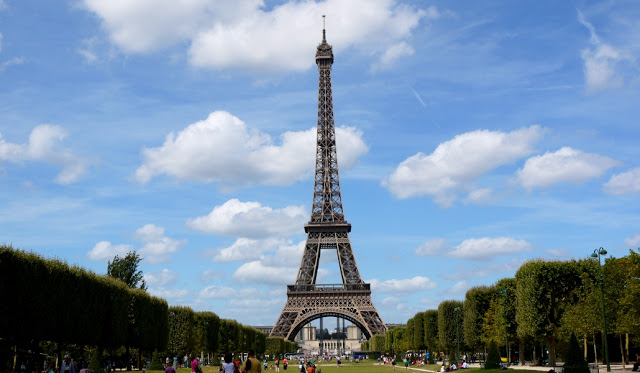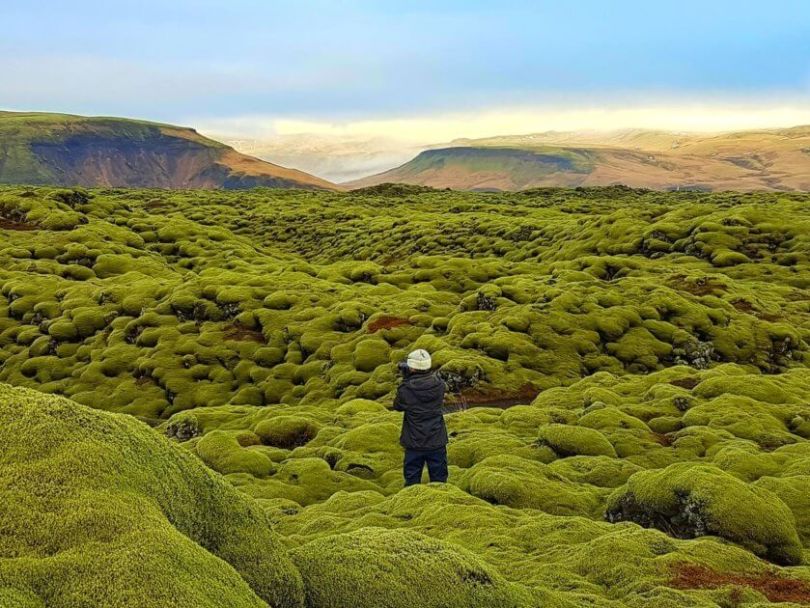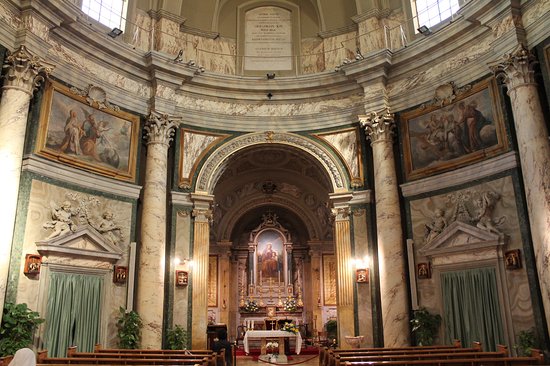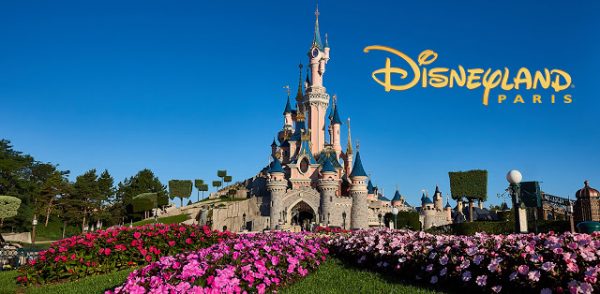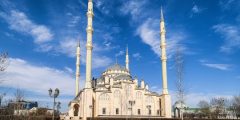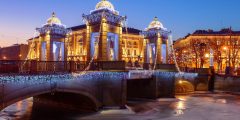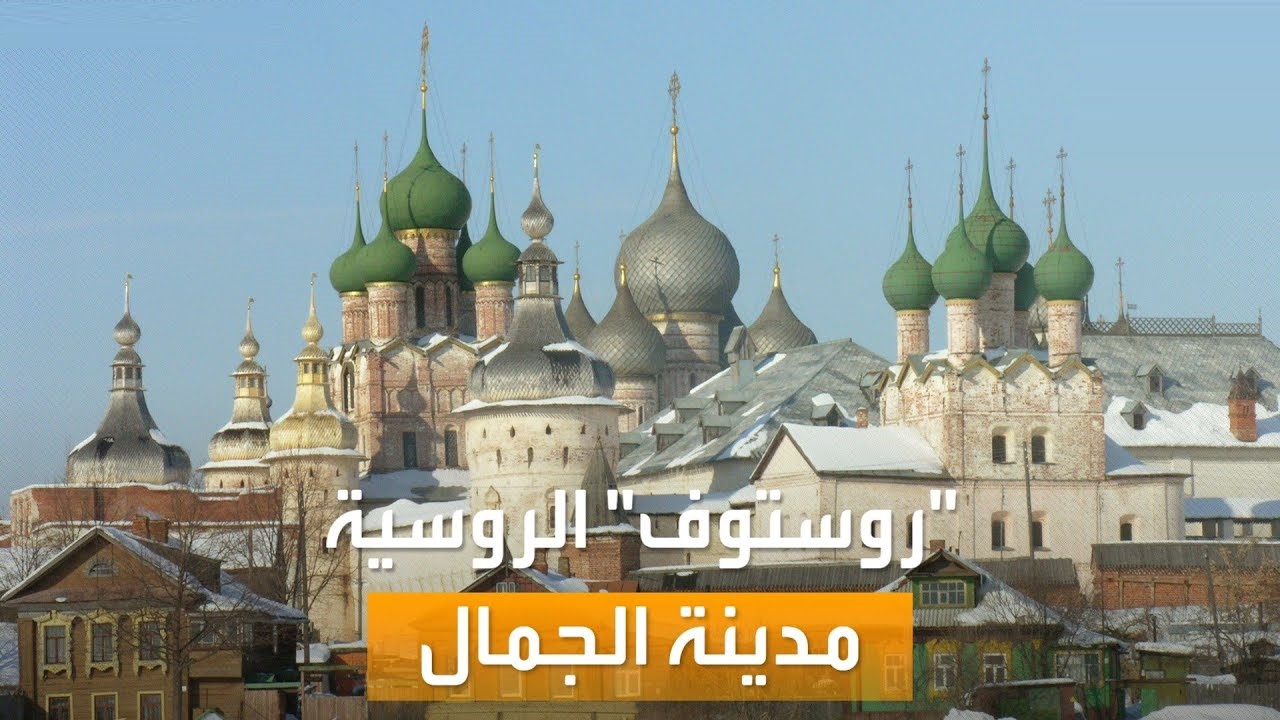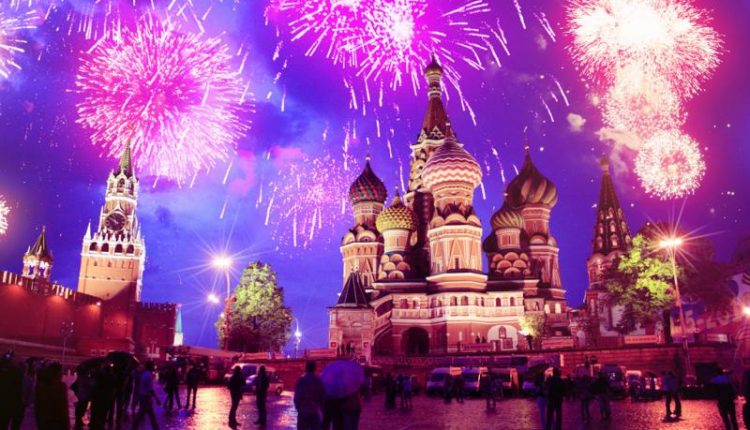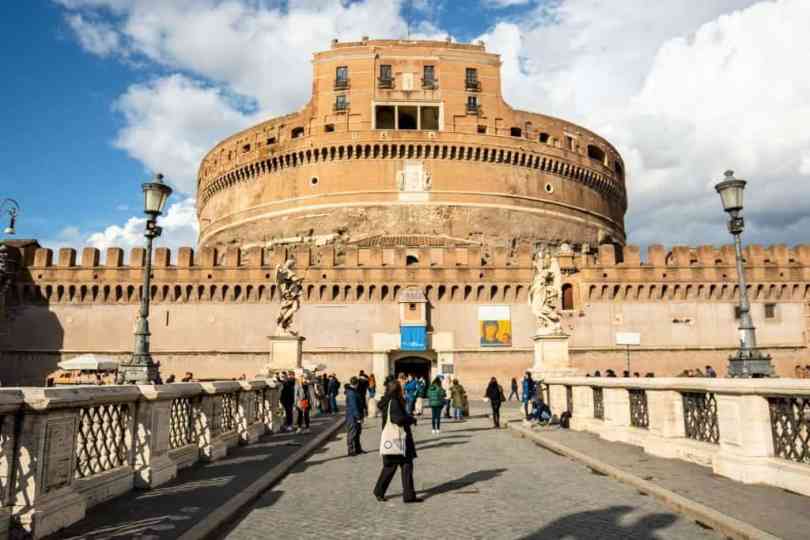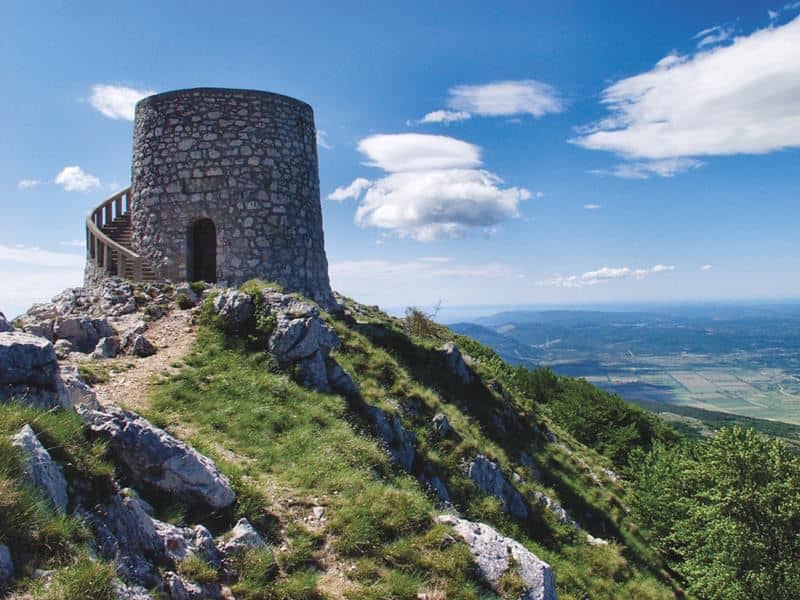The most important information and tourist places in Paris
Tourist places in Paris is the capital of France and its largest city
It is located in the north of the country and is inhabited by about 2.3 million people.
It is crossed by the Seine River and has a mild oceanic climate.
Paris is considered a symbol of French culture due to its tourist and historical attractions
It is called the City of Lights and is visited by more than 34 million tourists annually.
It also occupies a great global position in Moda and cooking and is considered the country's commercial and economic capital.
As considered Tourism in Paris One of the city's most important resources.
Tourism in Paris:
- The city of Paris is characterized by a special charm that enchants visitors because of its elegant beauty and romantic atmosphere. This city, which is incomparable to any place in the world, includes many luxurious historical monuments such as: the Eiffel Tower, the Church of Our Lady and the Champs-Elysees. But the charm of Paris lies in the little details: the little cobbled streets, the beautifully trimmed trees, its sweets and pastries, its delicious tea salons and its art galleries. Paris is like an open museum where the architecture of the buildings is magnificent and the elegance of everyday Parisians.
- From its chic shops to its exquisite cuisine, the city of Paris is the epitome of beauty and creativity. Where the capital of lights still maintains its cultural heritage and historical features, including French gardens and international artifacts. When you visit Paris, take a tour of the Louvre Museum and the Orsay Museum to see Leonardo da Vinci's masterpiece 'Mona Lisa' and Monet's masterpieces.
- We also advise the traveler to Paris to wander around the ancient neighborhoods of Paris such as the Latin Quarter, the legendary Seine Café in Saint-Germain-du-Prés, and the beautiful atmosphere in Montmartre. In every nook and cranny and in all the famous sites, Paris displays its wondrous charm. One visit may inspire a lifelong love story.
The best time to visit Paris:
- The best time to visit Paris is from April to June and October to early November when the weather is pleasant and pleasant and the tourist crowds are smaller than in summer. The cheapest time to visit Paris is early December, January and February, and perhaps the preferred month to travel to Paris is June.
Paris site:
- Paris is located in north-central France, in an arc curving from the north in the River Seine whose summit includes two islands, the Isle of Saint-Louis and the larger Isle of La Cité, which form the oldest part of the city.
Transportation and transportation in Paris:
- Paris provides several packages of subscriptions for transportation in the city, which allow the use of most types of transportation such as buses, metros, trams, and others …
- Among these packages we find: Pari Facet with a daily subscription of 11.65 euros, Mobilis Card with a daily subscription of 7.50 euros, T+ ticket of 2 euros valid for 23 hours, Navigo Card with a value of 75.20 euros per week and XNUMX euros per month.
- Bus, trolleybus and metro: Paris has 47 bus lines (Base Noctilian), which operates from 00.30:5.30 until 21:45 in the morning, and is intended for night wandering and for early morning workers. You can also use the Paris City Vision service, with a subscription of XNUMX euros, for a bus tour that lasts XNUMX hour and XNUMX minutes, passing through the most important tourist attractions in Paris. There is also an air metro for an unforgettable tourist experience.
- Walking : For those who like to walk around on foot and explore the Parisian charm closely, Paris provides the 'Tobogide' service, which is an accurate map of the neighborhoods and landmarks of Paris.
- bicycle : For bicycle lovers, Paris provides a 'Philippe Metropole' bicycle rental service with several daily, weekly or monthly subscriptions starting from 5 euros per day.
- Tramway: Tramway covers limited areas of the city and its most important lines are T2 and T3.
- taxi: The price of a taxi stop is €4 + €7 per kilometer depending on the area. Taking a taxi from Charles de Gaulle airport to central Paris costs 55 euros and from Orly airport 35 euros.
- ship : There are several transport companies by boat on the Seine River in Paris, such as: Batbus, Botto Parisien and others, and they provide you with a wonderful tourist tour in the Seine River, in which you discover the city and its most important tourist attractions.
The cost of tourism in Paris:
- The cost of a medium-cost tourist trip for two people for a week in Paris is about 1670 USD, which includes accommodation, food, transportation, and sightseeing, without counting airline tickets.
- Food prices: Starting at $17 per meal.
- Hotel prices: Starting at $45 for two people for one night. You can book a hotel in Paris easily with our website Booking.com
The most important tourist places in Paris:
1. The Eiffel Tower:
- It is perhaps the most important and famous tourist attraction in the world and certainly the most symbolic landmark in the city of Paris. It's hard to believe that the tower's structure was considered an atrocity when it was first revealed. The tower was designed by Alexandre Gustave Eiffel and built on the occasion of the 1889 Paris Exhibition to celebrate the centenary of the French Revolution.
- Visitors can use the elevator to reach the first floor of the tower (its height is 57 meters) or climb 360 degrees on foot, and to reach the second floor (its height is 115 meters), you must climb another 344 steps in the staircase. And to reach the top of the tower, you can take the elevator from the second floor and enjoy an amazing panoramic view of Paris.
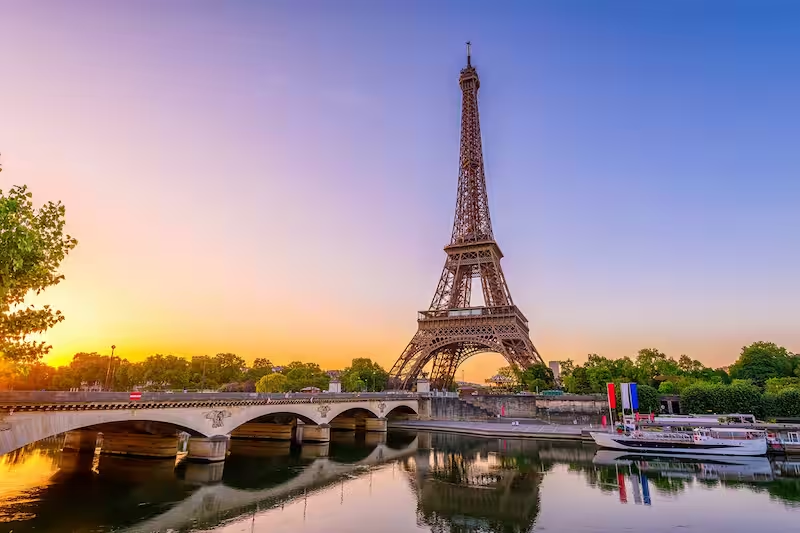
2. Musée du Louvre:
- It is a luxurious palace that was once the residence of the kings of France and today it has become a stunning museum of fine art. Visitors enter the museum through its wide yard from the glass pyramid. The museum includes more than 30 pieces of art from prehistory to medieval art, in addition to European art paintings from the 15th to 19th centuries.
- It is impossible to visit all parts of the museum at once, but the visitor can focus on one exhibition such as classical statues, Italian Renaissance art or French art paintings of the 17th century AD, or take a tour around the most important pieces of art. The most famous piece in the museum is the Mona Lisa or La Gioconda painting by the famous Italian painter Leonardo da Vinci (the date of painting the painting 1503-1505 AD) in addition to many artistic masterpieces such as: the statue of Venus de Milo, the statue of the victory of Samothrace, the painting of the wedding ceremony and the frescoes of Botticelli.
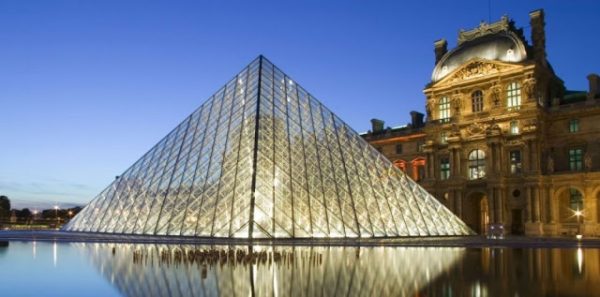
3. Cathedral of Our Lady, Cathédrale Notre-Dame de Paris:
- Considered a triumph of Gothic architecture, the Basilica of Our Lady is located in the heart of Paris on the Isle de la Cité (an island in the Seine) near the Latin Quarter. On this small island, the Romans built the city of Lutetia, and the kings of France lived there from the 6th century AD to the 14th century AD. The Church of Our Lady was built in 1163 AD by order of King Louis IX and Bishop Maurice de Sully, and the construction work lasted 150 years.
- The church was built first in the old Gothic style, then some parts (the western front and the nave) were added in the neo-Gothic style. What attracts the visitor most to the church is its carefully decorated front façade with its hanging carvings. Entering the church, you will be amazed by the large vaulted space, which seems endless with flickering candlelight.
- The interior features impressive stained-glass windows, particularly the rose window in the north of the cathedral. Every Saturday and Sunday at 9.15pm the cathedral presents a special audio and video show designed to inspire visitors. Admission is free.
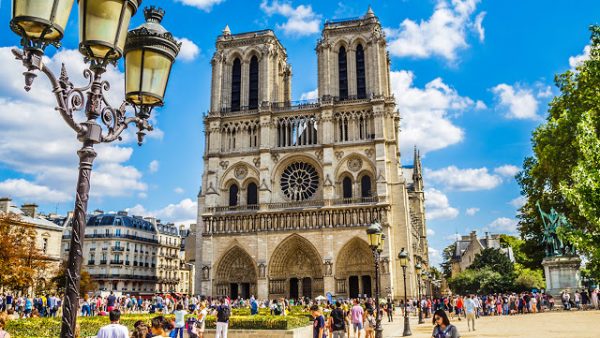
4. Avenue des Champs-Elysées:
- Do not be surprised when you hear that the Champs Elysees was a deserted street before it was redesigned by the architect Le Notre in the 16th century AD. The street is divided into two parts by the Rhône-Point-de-Chuans-Elysees and the rest of the intersections of the surrounding streets. The lower part of the street adjacent to the Place de la Concorde includes a large park called the Champs-Elysees Gardens and the Petit Palais Museum.
- As for the upper part that ends with the Arc de Triomphe, it includes luxury shops, hotels, restaurants, cafes, cinemas and theaters. This area attracts many tourists and is considered a gathering place for Parisians. The Champs-Elysees Street is famous for its prestigious shops, such as Maison La Durée, which is a luxury sweets shop and includes a tea salon dating back to the 18th century AD. The place is also famous for specializing in a special type of sweets, which is 'macaroons'.
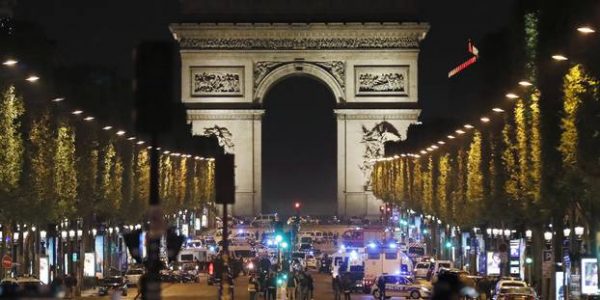
5. Musée d'Orsay:
- It is one of the tourist attractions in Paris due to its collection of rare art pieces. The museum is located in a high-value area in Paris (the former railway station in Orsay) and includes among its walls several pieces of art by the masters of the Impressionist school, such as: Degas, Manet, Monet and Renoir, and post-Impressionist artists such as: Bonnar, Cézanne and Van Gogh. The most important paintings in Orsay are: The Magpie, Gare Saint-Lazare and Luncheon in the Grasse by Claude Monet, Paul at Moulin de la Galette by Renoir.
- The Orsay Museum is the best place in Paris to see Impressionist art. The museum includes exhibitions of decorative pieces and the art of photography, in addition to cafes and a restaurant at the top of the building, which was the former restaurant of the Orsay Hotel, and is characterized by its gilded ceilings and sparkling chandeliers.
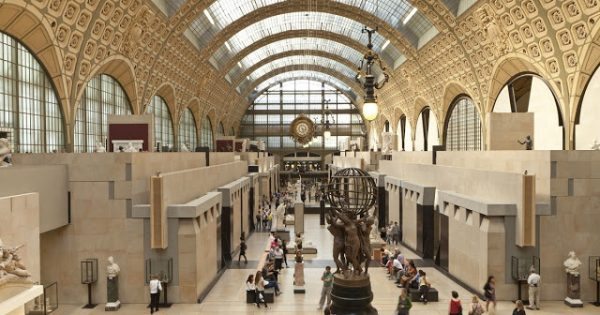
6. Palais Garnier, Opera National de Paris
- The Palais Garnier Opera House is a Baroque theater designed as a venue for opera and ballet performances. The building was designed by Charles Garnier with the support of Napoleon III between 1862 and 1875 AD. The facade of the Palais Garnier is characterized by classical columns and 8 statues representing allegorical figures: poetry, music, Valentine's Day, recitation, song, drama and dance.
- It also includes busts of famous composers such as: Halévy, Meyerbeer, Rossini, Ober, Spontini, Beethoven and Mozart. At the top of the building are four gilded statues glorifying poetry and fame. The area of the basement of the Palais Garnier is 11 square meters, but it can only accommodate 2200 people. The hall was decorated with red and gold velvet, or the ceiling was decorated with a painting by Chagall.
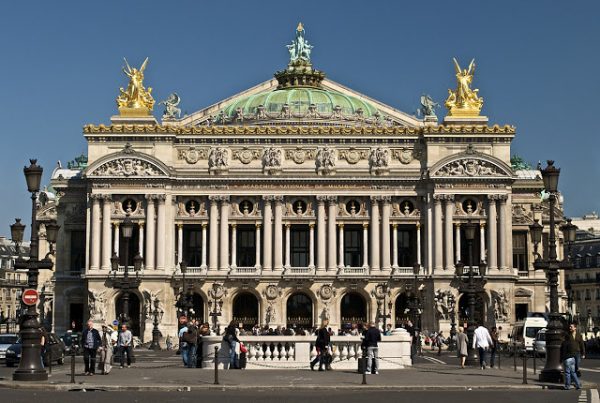
7. Place de la Concorde:
- It was built between 1755 and 1775 AD by the architect King Louis XV. It is distinguished by its octagonal shape and is considered the heart of Paris during the 15th century AD. With its majestic proportions, the Place de la Concorde is one of the most beautiful squares in Paris. The square witnessed many historical events, including the liquidation of King Louis 18 and Napoleon's triumphal path.
- The square of the square offers wonderful views of the Arc de Triomphe and the La Defense district, and in the middle is an Egyptian obelisk that was donated to King Charles 5 by the Egyptian viceroy. La Concorde is also considered a busy road intersection, and the movement of cars in it is fast, so care must be taken when crossing the road, because French drivers do not care much about pedestrians. And to get to the Place de la Concorde, you can walk from the Louvre Museum to the Tuileries Garden or Rivoli Street, or walk on the sidewalk of the Seine River. Or take the metro to Place de la Concorde station.
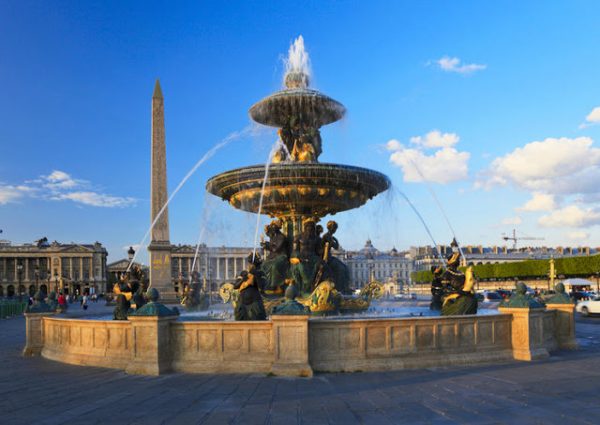
8. Arc de Triomphe:
- It was established in memory of the victorious French armies of the revolution and the first empire. Napoleon requested the construction of this great edifice in the year 1806 AD, but he did not live to witness the end of the works in it in the year 1836 AD. Designed by the architect JF Chalgran, it features large reliefs depicting the victories of the French armies.
- On the inner surface of the arch are engraved the names of 660 generals and 100 battles. From the viewing platform at the top of the arch, you can see the 12 roads that lead to the Arc de Triomphe. At the bottom of the arch, there is the Tomb of the Unknown Soldier, which was built in 1921 to commemorate the victims of the First World War.
- Every evening, a small delegation of soldiers lights a torch in the shrine, and on November 11 of each year, which coincides with the armistice of 1918 AD, there are celebrations commemorating those who perished in the two world wars.
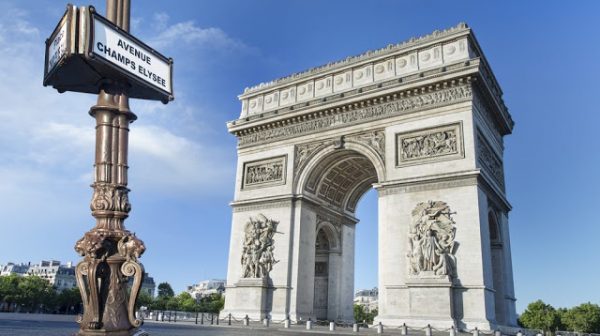
9. Sainte-Chapelle Church:
- Located inside the Palace of Justice on the island of Paris, Sainte-Chapelle is a medieval masterpiece. This masterpiece of Gothic architecture was built between 1942 and 1948 by order of King Louis IX to house the precious Christian relics that he acquired from the Byzantine Emperor.
- The church is famous for its stained glass windows that give the place an iridescent glow and a quiet light aura. Colors and light symbolize divinity and sanctity. The church is usually used for concerts and the place gives the visitor great spiritual energy. To find the chapel, enter the Iron Gate of the Palace of Justice and walk through its inner courtyard.
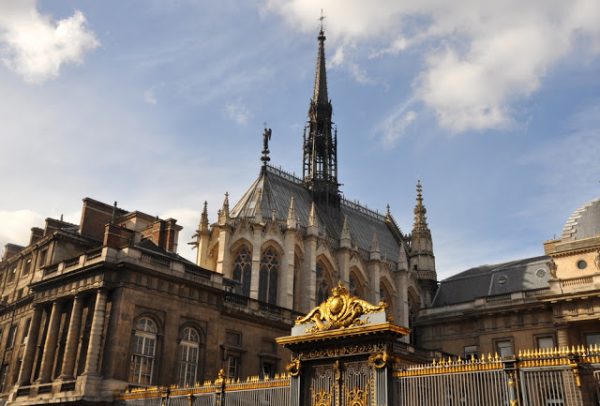
10. Luxembourg Gardens
- It is considered one of the most famous gardens in Paris after the Tully Garden, and it was established in the 17th century AD after the construction of the Luxembourg Palace, but it took its current form in the 19th century AD by the design of the architect JF Chalgren. The huge octagonal pond with a fountain is the main feature of the gardens with tall elegant columns carrying statues on top of them. This part of the garden was designed in the classic French style with many chairs scattered around for visitors to rest.
- The Luxembourg Gardens are very popular with Parisians for strolling and relaxing, especially students of the Latin Quarter. Another major feature of the place is the Medici Fountain, which is hidden behind trees opposite the eastern front of the palace. And in the southwest of the gardens, we find a tennis court and the Luxembourg Theater with 275 seats, which presents puppet shows.
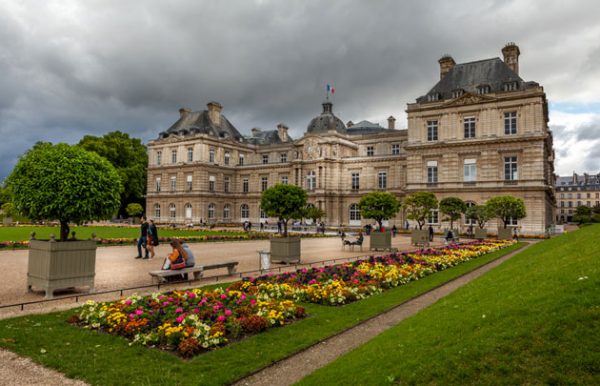
11. Sacre Coeur and Quartier Montmarte:
- It is located at the highest point in the city and has a distinctive aura that amazes visitors. With its unique alabaster façade that blends Byzantine and Roman styles, the Sacre-Coeur Church resembles a wedding dessert. Entering the church, you will be amazed by the stunning mosaic of Christ with a flaming heart, which gives the place an emotional and spiritual atmosphere appropriate to a church that was created as a symbol of hope after the Franco-Prussian War.
- The church is lit by candles, providing a wonderful contrast with the darkness. Visitors can spend some time on the church platform enjoying panoramic views of Paris or climb the tower for a clearer view. The park that leads to the church is a popular area for Parisians to spend the most beautiful times, and what adds to the atmosphere is the splendor of street musicians.
- While visiting Sacre-Cours, it's fun to spend some time exploring the Montmartre quarter, which was a small medieval village that exudes an antique charm. During the 'Belle Époque' period, the village of Montmartre began to attract famous artists such as Toulouse-Lautrec and Edgar Degas.
- The bohemian spirit of Montmartre can still be found in its charming squares and cobblestone streets, especially in Place Tartre and Place Roland d'Urglas. The Montmartre neighborhood also includes distinguished museums such as the Montmartre Museum and Dali Space.
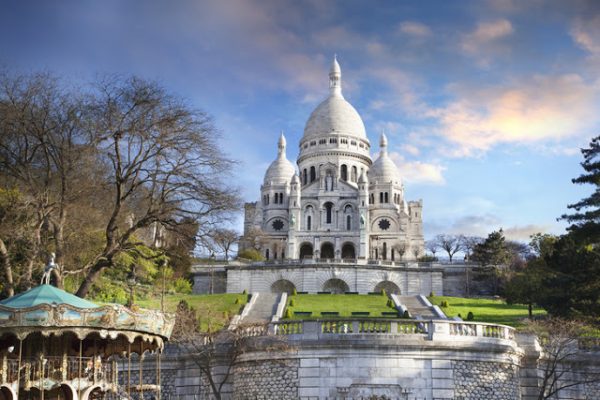
12. The Pantheon:
- Originally built as a church, the Pantheon is a national monument and the burial place of France's great men. In the year 1756 AD, King Louis 15 commissioned the architect, Jacques-Germain Soufflé, to build a new church in place of the remains of the Saint Genevieve Monastery, and its construction was completed in the year 1790 AD.
- The architecture of the Pantheon shows a clear touch of the Rococo style of the era of Louis 15 with classic additions to the building, as the Pantheon was the first building in Paris that sought to return to the architectural simplicity of the classical antiquity. It is considered the benchmark for the period before and after Napoleon, and inspired the construction of other structures such as the Arc de Triomphe, the Madeleine and the Stock Exchange building. The Pantheon building houses the tombs of philosophers Voltar and Rousseau and writers Victor Hugo and Emilie Zola.
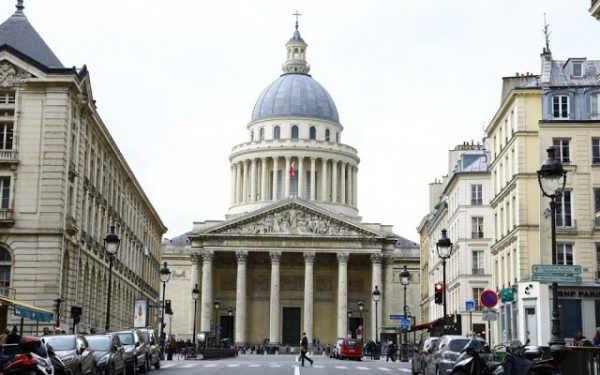
13. Places de Vosges:
- It is the oldest square in Paris and is located on the Avenue Marie and was a model for other squares such as Place Vendôme and Place de la Concorde. The Place de Vosges was built between 1605 and 1612 AD and was initially called the royal square because it was surrounded by many aristocratic residences.
- Typical of Renaissance architecture, the square is characterized by a pleasing and symmetrical form, with monolithic red brick houses, stone details, and hipped roofs. In the 17th century, the Place Vosges provided a wonderful venue for ceremonial events such as tournaments, official receptions and weddings. It was also a favorite venue for jousting, although it was attended by Cardinal Richelieu. The square is located in the elegant Mari district, a historic district characterized by medieval and Renaissance palaces.
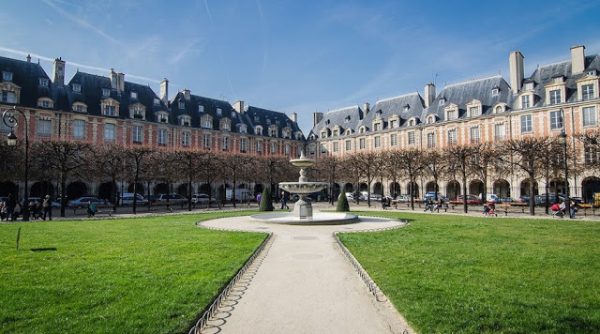
14. Place Vendôme:
- This beautiful square was built by the architect Jules Hardouin-Mansart during the reign of King Louis 14 and was called Louis the Great Square at that time. The facades of the surrounding houses were built between 1686 and 1701 AD, and the main objective was to install the royal academies, the royal library, and a hotel for foreign envoys in the field, and because of the financial crisis, the king was forced to sell the houses to the nobles and the wealthy.
- The new owners of the houses built beautiful palaces with courtyards and gardens, and the charm of the Place Vendôme is that it maintained the consistency of the overall design, which combined royal pomp with urban simplicity. Vondom is known for its luxury jewelry stores such as: Boucheron, Chanel and Cartier.
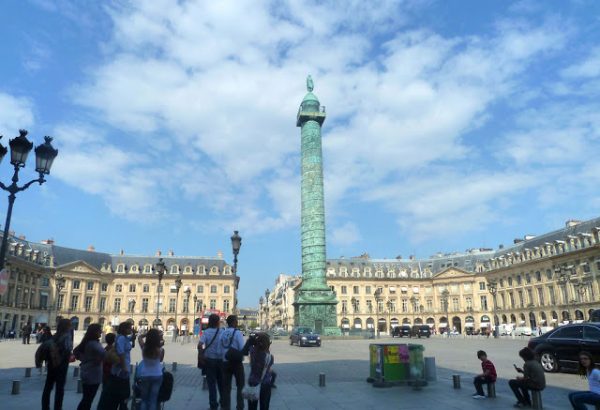
15. Center Pompidou:
- It is located between the Alice and Marie district in Paris and is an artistic and cultural center. In contrast to the neighboring historic buildings, the Bambidou Center features modern architecture, with staircases and elevators visible from the outside. Perhaps the most important historical landmark in the center is the National Museum of Modern Art, which displays a wide range of contemporary art pieces from many schools of art, such as cubism, expressionism, constructivism, realism, and others.
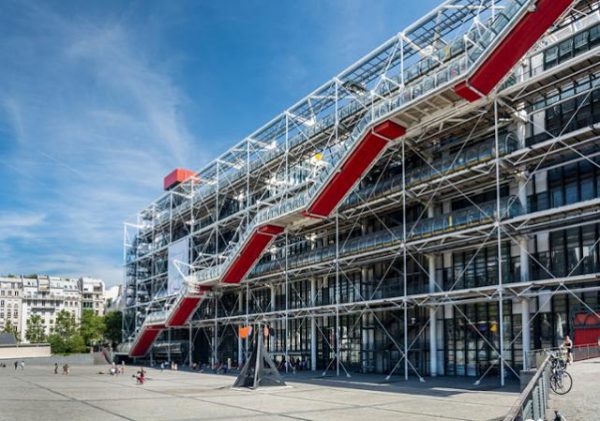
16. Les Invalides Hotel:
- It was built to be the headquarters of soldiers crippled during wars. Before the period of King Louis 14, soap soldiers were receiving treatment in hospitals and monasteries, and it was soon disposed of after that. After that, it was decided to allocate the Leys Enfield Hotel to be the residence of this category of soldiers.
- The building was constructed between 1671 and 1676 AD under the supervision of engineer Liberal Brant, and the church of San Luis de Zanvalide was built in the center of the hotel. The church became known as the Church of the Abbey of Les Invalides and is a magnificent church building of the French Classical period. We also find in the hotel building a military museum that includes many old military equipment and clothes.
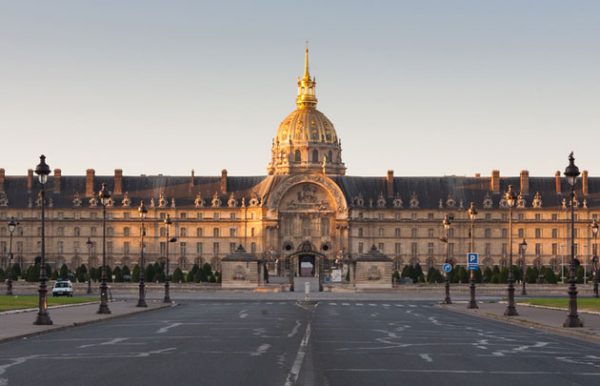
17. Palais-Royal:
- The Royal Palace or 'Palais Royal' in French is located opposite the Louvre Museum and represents another example of royal architecture. It was built as a palace for the Cardinal during the reign of King Louis 13, and later became a royal residence, and it was the seat of decision-making for 4 centuries. The building embodies classic French architecture and features a beautiful courtyard.
- The square, with its trees and calmness, seems to you as a village far from the city, despite being in the heart of Paris. Inside the square, there is an unusual carving of small striped columns that vary in length, and the carvings raise amazement and curiosity.
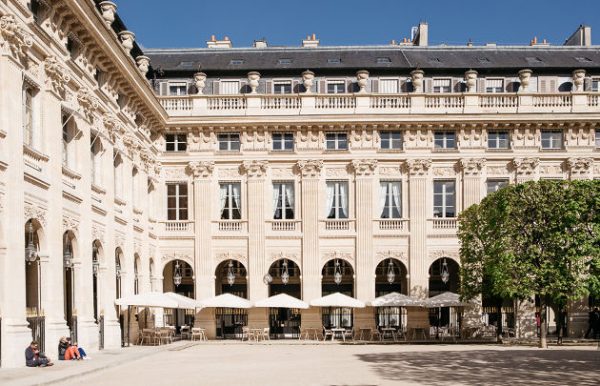
18. Place de Bastille:
- The notorious Basti prison was a detention center for citizens and a symbol of domination and injustice, and it was stormed and completely demolished on July 14, 1789 AD. In the center of Basti Square, there is a 51-meter-long column called the July Column. Above it there is a statue that symbolizes freedom and commemorates the July Revolution of 1830 AD that overthrew King Charles X and brought Louis Philippe to power.
- At the bottom of the column there are four sculptures of a duke and a lion, symbolizing the free people of France. Inside the column, there is a spiral staircase of 283 steps that leads to a platform that provides an excellent view of the new Opera Basti, which was built on the site of the old prison.
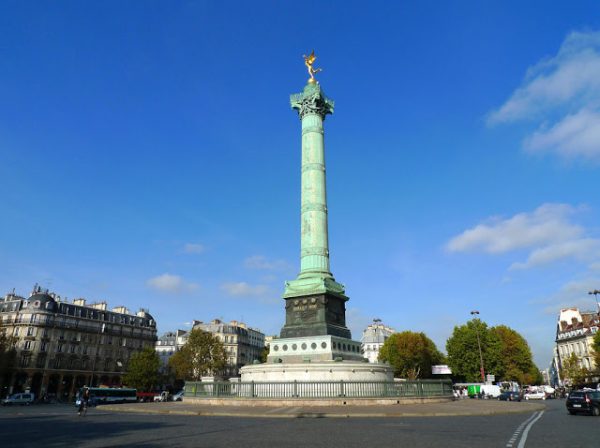
19. Chatelet and Tour Saint-Jacques:
- Place Chatelier is located in the center of Paris in the first arrondissement on the Seine River. In the middle of the square are several buildings of historical value, such as the Châtelet and the City Theatre. The surroundings of Châtelet are also worth a visit. You can wander around Rivoli Street, pass through Sebastopol Street, then the small garden, to find the Saint-Jacques Tower, which was built between 1508 and 1522 AD, and it is the remaining part of the Saint-Jacques de la Poire church.
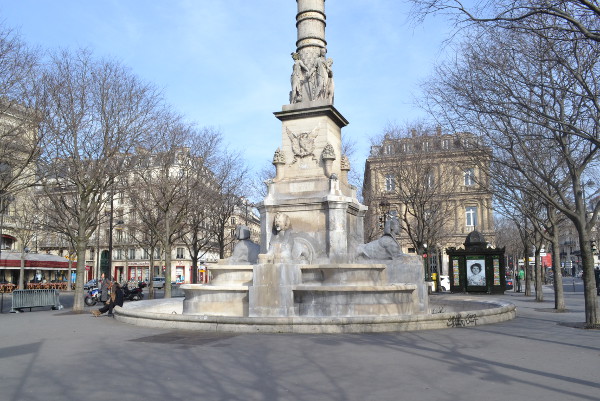
20. La Conciergerie Building:
- This castle dates back to the Middle Ages and was a notorious prison for the French Revolution. Here prisoners including Marie Antoinette and Robespierre were kept in shoddy cells awaiting their fate. La Conciagre was part of a palace in the Middle Ages and has now been converted into a museum.
- The museum includes many halls, including the Le Girondins Hall, the Le Jeune Darem Hall, and others, which include artifacts from the bloody days of terrorism, such as the guillotine blade and the last letter of Marie Antoinette. And to get an exceptional and complete view of the building, you can stand on the other side of the Seine at the pier of La Megessoire and enjoy the full view of the La Conciargre.
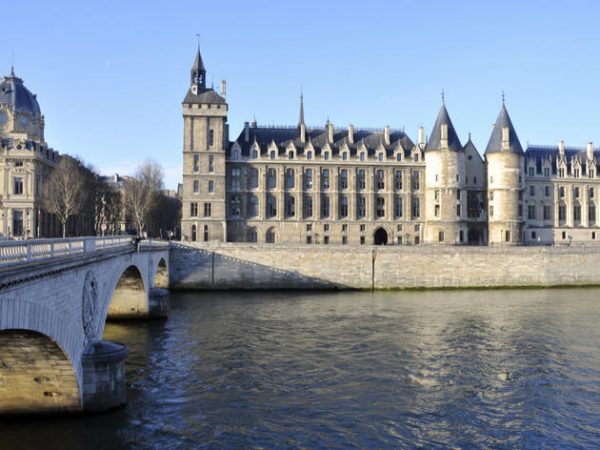
21. Grand Arche of La Défence:
- In western Paris, at the end of Charles de Gaulle Street, there is an area full of tall buildings that have developed since the 1960s. The neighborhood is called La Defense, which reminds of the Franco-Prussian war in this region in the year 1870 AD. Today, the neighborhood is seen as the gateway to Paris into the 21st century.
- Le Grand Arc, which was designed by Joanne Otto von Sperkelsen, gives a wonderful impression to the place, as the arc is 110 meters long and decorated with white Carrara marble. Grand Rec de Defense was inaugurated in 1989, on the bicentenary of the French Revolution, and is considered a contemporary symbol of brotherhood among the French people.
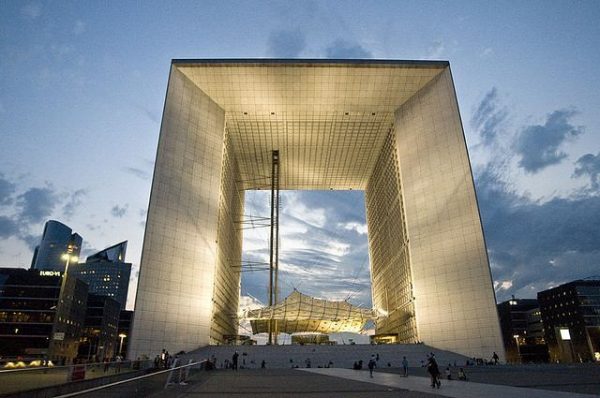
22. Bustling streets and legendary coffee shops:
- To explore the legendary cafes in Paris, the best place to start is the Avenue Saint-Germain in the 6th arrondissement, which includes among its sidewalks very elegant and beautiful trees, shops and very elegant cafes. One of the most famous cafes in Saint-Germain is the Café du Fleur, which was the meeting place for John Paul Sartre and Simone de Beauvoir. In addition to the Le de Magu café, which was frequented by James Joyce, Picasso, Hemingway and other artists.
- Montparnasse Street restaurants also hosted many artists and celebrities. Among these restaurants, we find: Le Domme, which serves exquisite dishes and specializes in seafood. La Coupole Restaurant is also distinguished and luxurious, and it was the destination of many famous people such as: Duran, Leger, Man Ray and Picasso. La Rotonde Restaurant was also a destination for artists and painters in the 1920s.
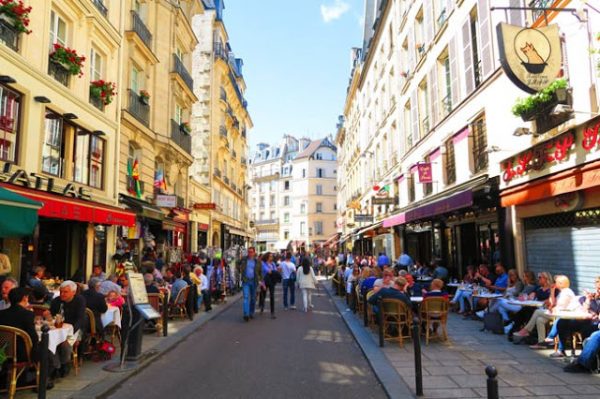
23. Disneyland Paris:
- It is located in the municipality of Chessy, 32 km east of Paris. It is a large tourist complex with an area of 22.3 km² that includes two parts: Disneyland Park and Walt Disney Studios, in addition to 7 hotels and a golf course. Disneyland Paris also includes a shopping and entertainment center called Disney Village. Disneyland includes many entertainment games for adults and children, and mini-cities of famous cartoon films, where your child can enter these worlds that he only saw on TV.
The best hotels in Paris:
The most popular neighborhoods in Paris are without a doubt the elegant 8th arrondissement near the Louvre and the Champs-Elysées, the lively Left Bank of the Seine, and the bohemian quarter of Montmartre. Whichever you choose, the metro is easy to use and well connected to all the tourist attractions. Here are some highly rated hotels in these areas of Paris:
Read also:Activities near the Lhotio-Anse river in France- Luxury hotels: Nothing captures the splendor of the 8th arrondissement better than a hotel The Bristol Legendary, with a spa, rooftop pool and impeccable service. hotel La Reserve Paris Hotel and Spa It is another work of art, combining sumptuous surroundings, antique room furniture, high-tech amenities, and impeccable service. Hotel located The Thames In a great location next to the Tuileries Gardens, steps from the Louvre, and offering upscale personal service.
- Mid-range hotels: The student district on the Left Bank, perhaps the best location in Paris, is full of charm and within easy walking distance of Notre Dame, the Louvre, and other top attractions. Hotel providesSt. Germain des Pres Homely in individually decorated rooms. Nearby, a hotel Residence Henri 4 It has been meticulously maintained with Parisian charm, with balconies facing the street and rooms with kitchenettes.
- Cheap hotels: Hotel located Legend Hotel by Elegancia Between the heart of the Left Bank and the Montparnasse district, near the Luxembourg Gardens, it has small rooms with warm service in a privileged location. Hotel located Diana Family-run nearby, it has rooms overlooking a courtyard or a classic Parisian street.
